If you’re starting out fly fishing, check out our complete guide to fly reels. Learn about weight, drag, materials, and our favorite brands.
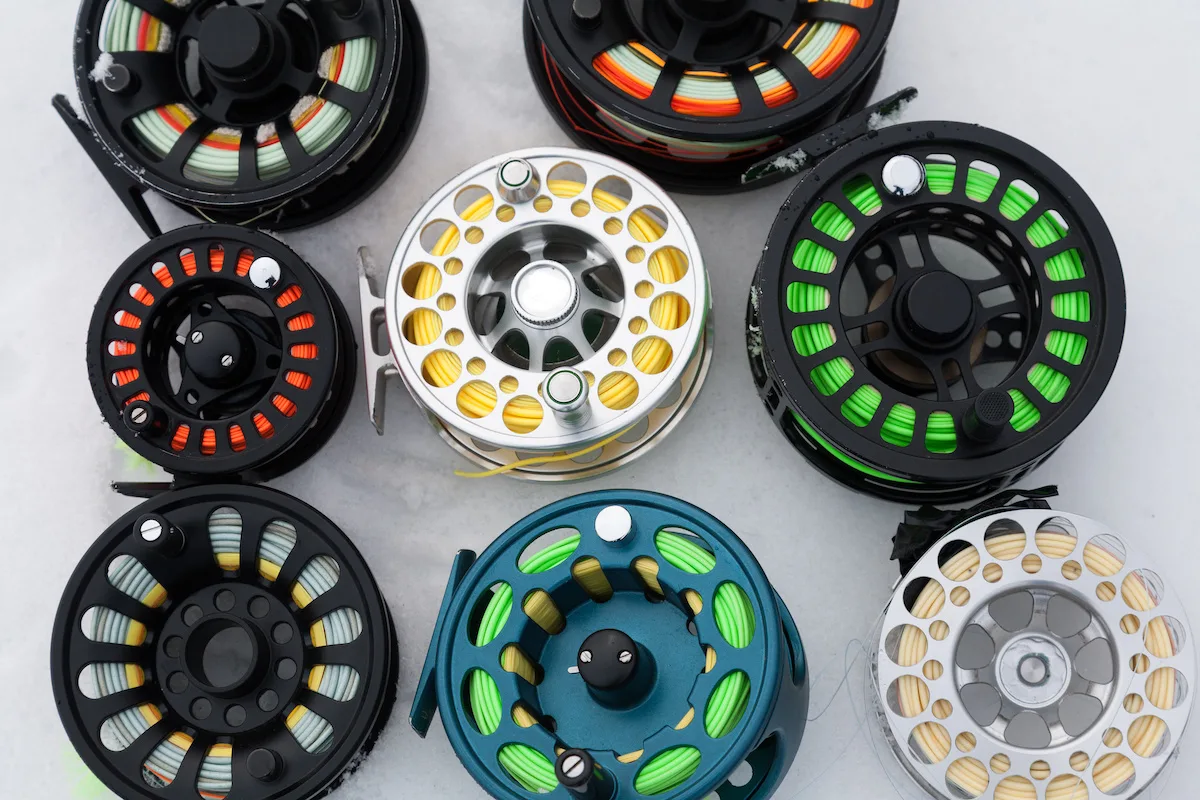
If you have ever had the chance to see an Abel Reel up close, then you know how easy it is to fall in love with the construction, design, and aesthetic of well-crafted fly fishing reels.
These days it is not unusual to see a fly fisherman express themselves through the reel color or design they decide to incorporate in their set-up. It seems to be the one place where a little flash comes out.
Put the right reel on the desk in front of fly fisherman and it is like a moth to a flame. They can’t resist picking it up to feel the aerospace grade aluminum in their hands. The need to hear the click of the drag system kicks in, and before they know it’s even happened, they are just an oversized kid with an expensive “rattle” in their hands. It’s hard to resist.
There is nothing like the sound of a fish on the take spinning line off a reel. If the “tug is the drug,” then we need to invent another saying for the sound and rush of the drag spin.
The thing about fly reels is the varying perception of their importance. There are some fly fisherman that can go on about the important aspects of a reel, and then there are some that might refer to it as a place to store line. They have the idea that any reel will work.
If we take a moment to break down a reel, we might find ourselves acknowledging the technology and craftsmanship that goes into modern reels. This might even help us understand what to look for, especially as a beginner.
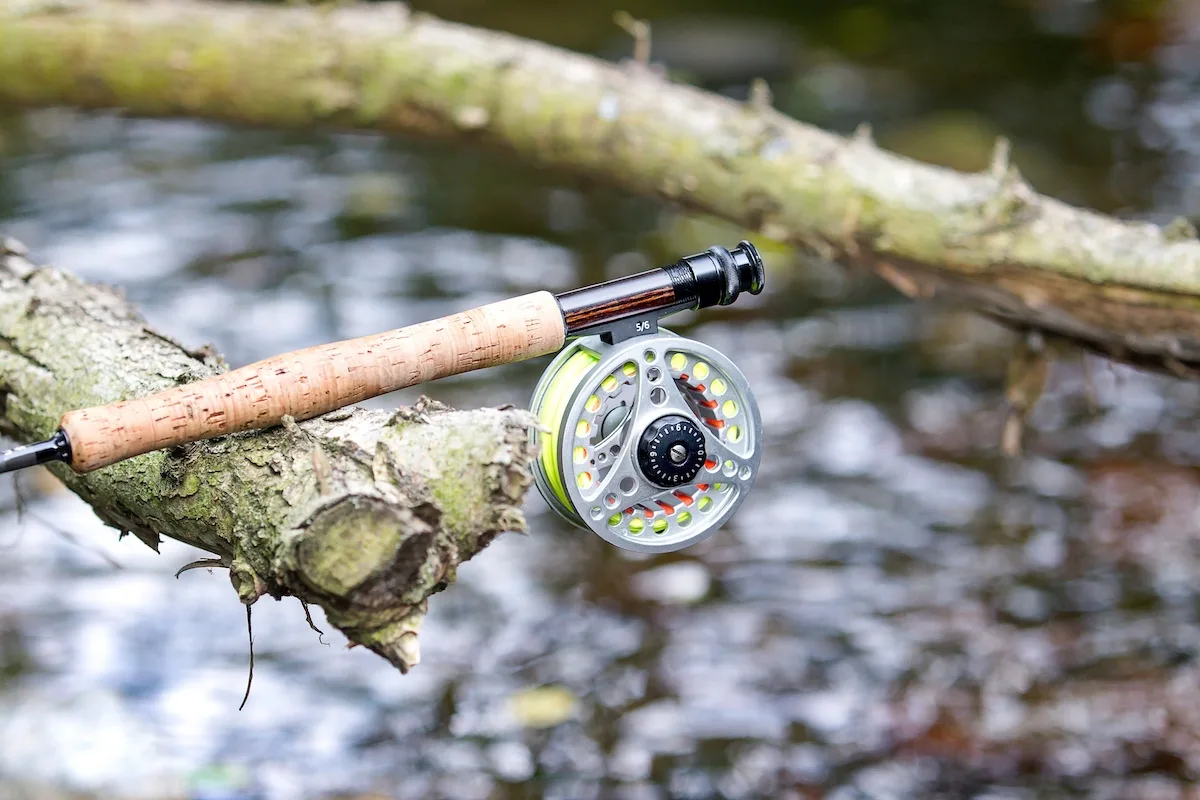
Fly Fishing Reels
As you begin fly fishing, it’s important to remember not to overthink a reel purchase. It is most important to invest in something that will be versatile and long lasting. Similar to investing in a fly rod!
History of the Reel
The first American fly reel is credited to William Billinghurst in 1859. It was built from wire and castings. Later on (in 1873), Charles Orvis had the first perforated spool and line click. This is credited for being the model for modern reels. Is this important to know? Probably not, but it’s fun to look at where reels started to appreciate how far they have come today.
Purpose
It might go without saying (yet also might make sense to state the obvious), but unlike bait reels, fly fishing reels are meant to protect your gear. Bait fisherman can reel and reel until their arms fall off, but we fly fish because of the finesse involved in casting as well as the retrieval of fish.
Try cranking a fly reel with light tippet and see how quickly even a 12-inch fish snaps off. Fly fishermen are trying to retrieve a fish when it presents the opportunity. But we also want the right amount of drag to speed that process up and keep from harming the fish through an exhaustive fight (see best practices for catch and release).
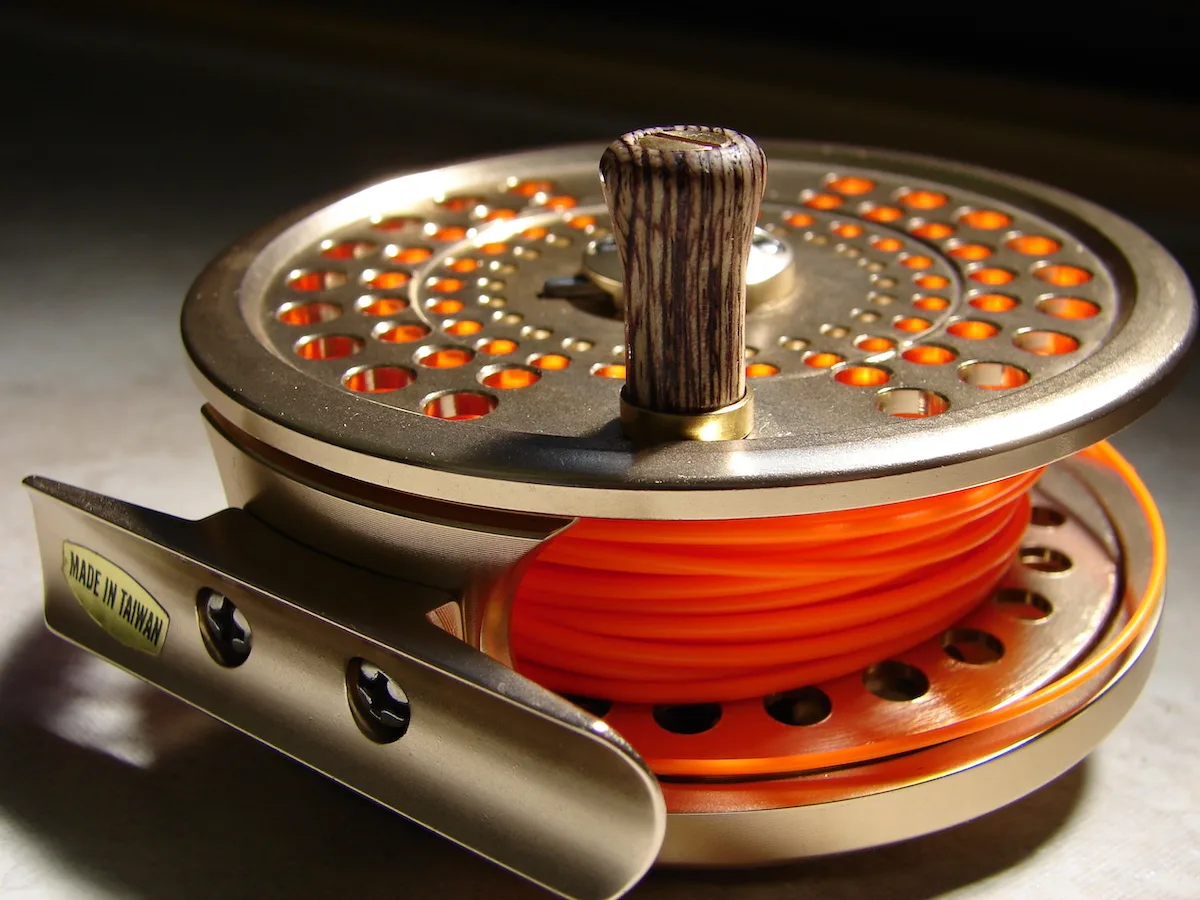
What to Know About a Fly Fishing Reel
Size
there is definitely the “right” reel size to have on a rod. However, reels are not as important in the casting system as getting the right line size/weight to the rod size and weight you are fishing. Because of that, you can get a reel that has the versatility to work across rod weights of 3/4/5.
Maybe that’s a bit of a stretch, but in the early days of putting your fly fishing gear together, it should work. At the end of the day, you will likely own far more rods than you do reels.
One advantage of fishing a size 6 reel on a 5wt rod (for example) is the larger arbor size that allows for quicker line retrieval (arbor is the center of the spool).
The large arbor has another advantage in that it causes less stress on the line when fully retrieved by being less pinched over a larger circumference. However, if you are primarily fishing for trout, you may lean towards a smaller lighter reel.
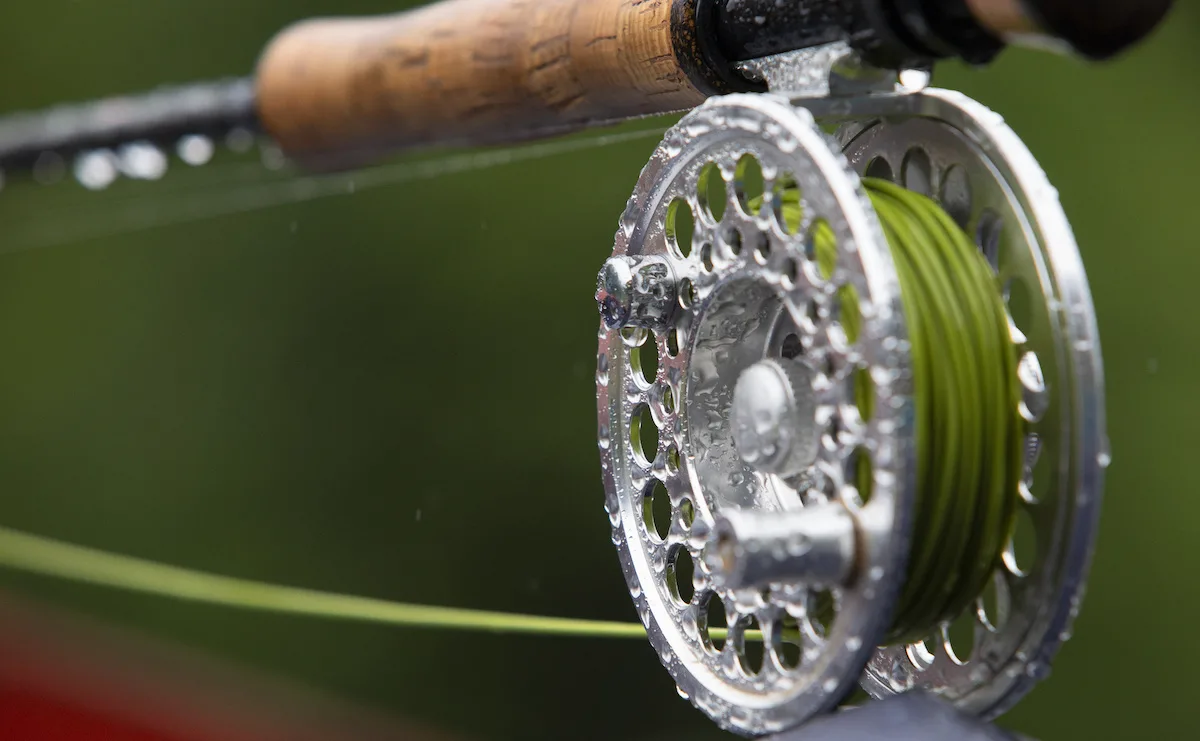
Weight/Balance
You might notice the first time you pick up a fly rod with a reel that there is a nice balance between both (or should be). Rod technology is making them lighter all the time, which makes reel construction and design imperative. Reel arbors seem to use less and less material all the time to cut weight without a loss in performance.
Without the correct rod and fly reel balance ,you are going to feel it over a day of casting, and your arm fatigue will in turn affect the correct casting motion. It is recommended that when shopping for a reel, you bring your fly rod along to match them up.
Click
Going back to the baby rattle analogy, you might want to hear the click of your reel all day long. It will likely be a preference thing, but make sure that noise is not going to annoy you. You may even be looking for a silent reel.
Just make sure you give it a listen before purchase. That classic click only comes with the click-and-pawl drags, and many modern reels use a disc drag that has removed that classic sound.
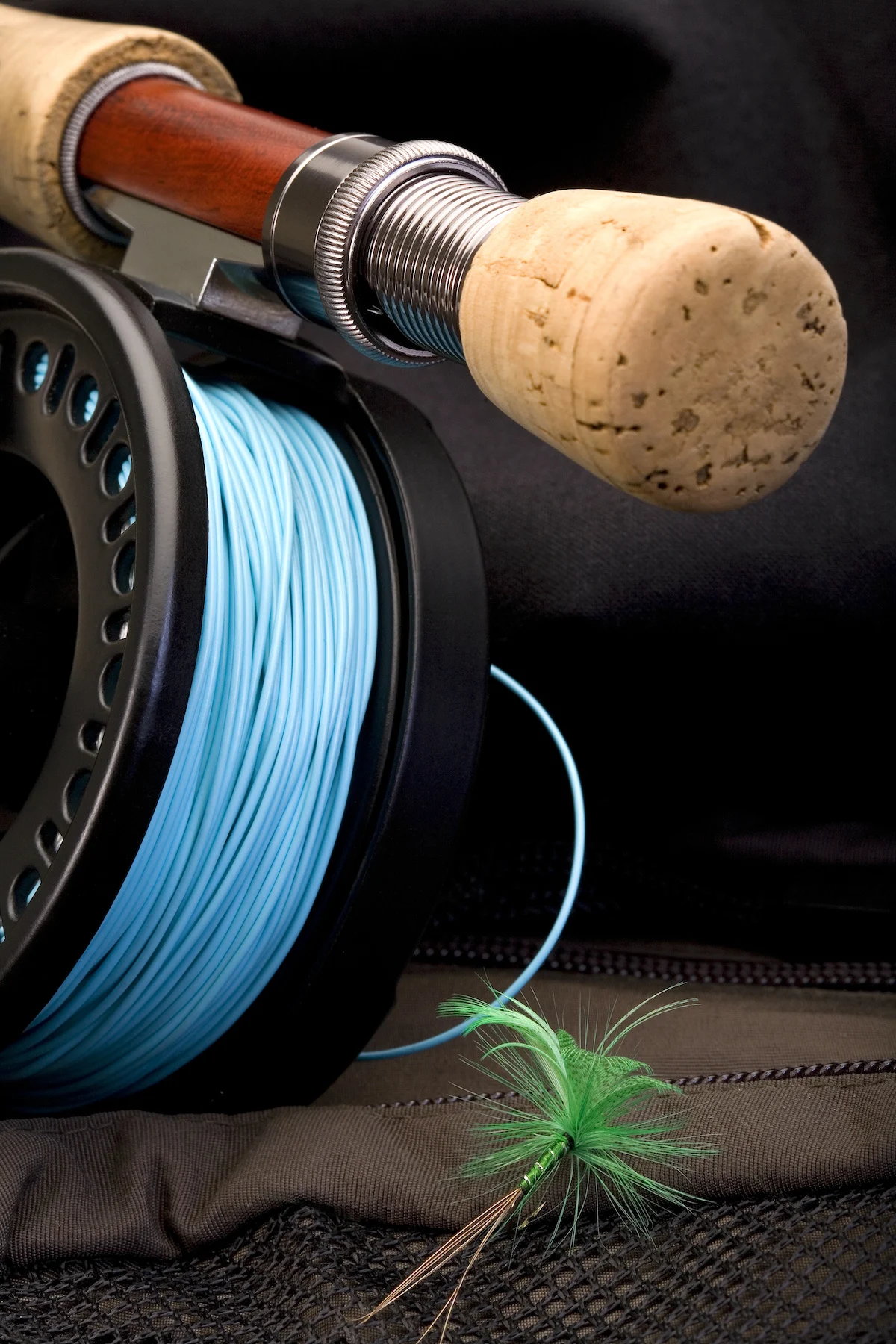
Fly Reel Drag
Basically drag is the braking system within a reel. The drag keeps the fish from running off with all your line too quickly, and keeps the fish from eventually snapping you off once it gets to your backing.
A high performing drag system will help you slow a fish down without any abrupt stops that break them off. We are trying to keep that lightweight tippet intact as we retrieve the fish.
A good drag system will also not be as susceptible to dirt and water that can cause those unpredicted stops and tension that snaps fish off.
For that reason, many upper end drag systems are sealed (hard to maintain), but should not require cleaning very frequently. Most likely you will be reading about disc drags in modern reels.
Materials
You definitely get what you pay for when it comes to reel materials. The last thing you want is for the materials in your fly reel to cause you to lose fish. Rough edges, sharp dings in the arbor, can cut or weaken line. Most of the reels today are machined aluminum. Think of a wood lathe carving a single piece of wood into the desired shape. The same happens with fly reels.
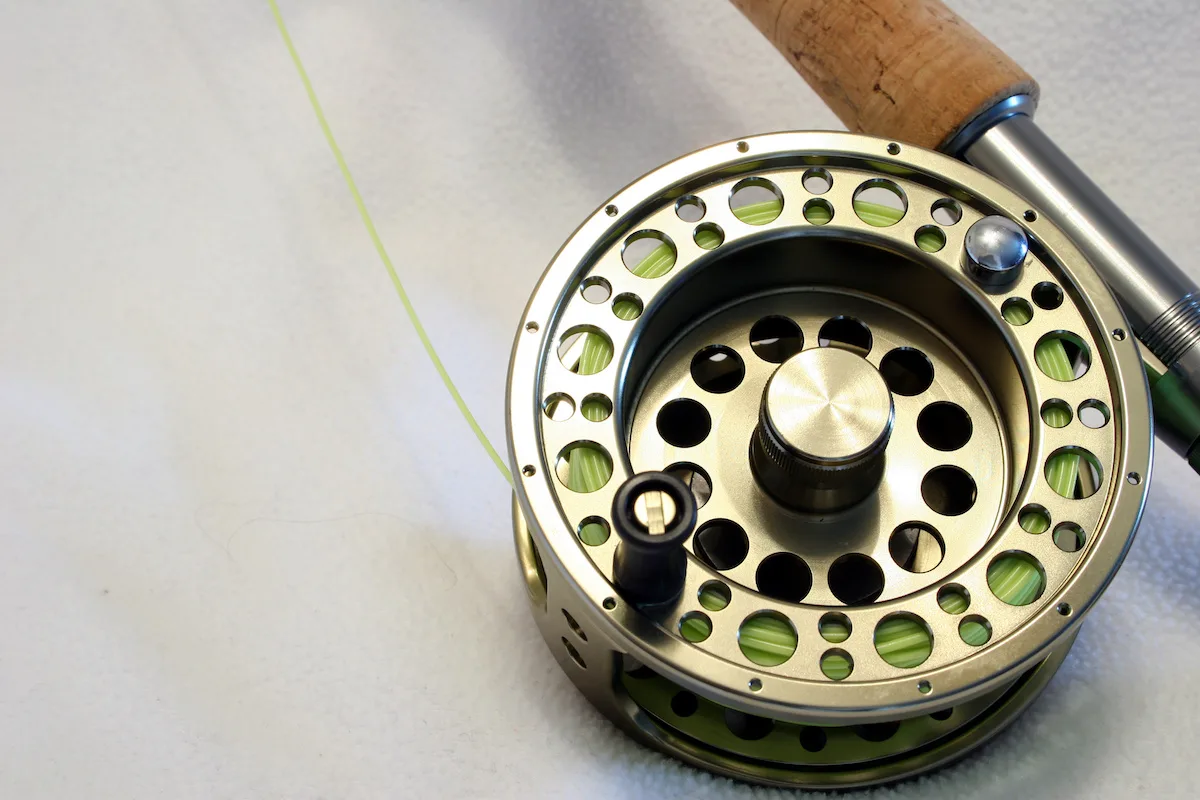
Price and Value
If you aren’t thinking about the reel as an integral part of the casting and retrieval system, it can be difficult to justify the price points on premium reels. There is definitely overkill when it comes to purchasing reels, and many of those price points target at fisherman who just want to collect more shiny rattles to play with.
However, don’t make the mistake of going cheap and having a reel that costs you fish you worked so hard to get on the line in the first place. You should definitely be able to find a good reel for around $200.
You can also stretch the value of one reel by purchasing additional spools to house different line types and weights. You may want to quickly be able to switch from a floating line to a sinking line based on the spot you are fishing. Be careful: some spools get just as expensive as full reels.
What to Buy
So what fly reel(s) should you buy? Here are a few options to get going and a few options to maybe think of acquiring down the line. Even at the beginner level you should be targeting reel specs between $100-$200. Here are our recommendations.
Entry Level
Have you purchased a fly reel yet? if so, let me know what brand in the comments. I’d love to hear your questions about reels as well! Don’t forget our tips for how to care for your reel here.
